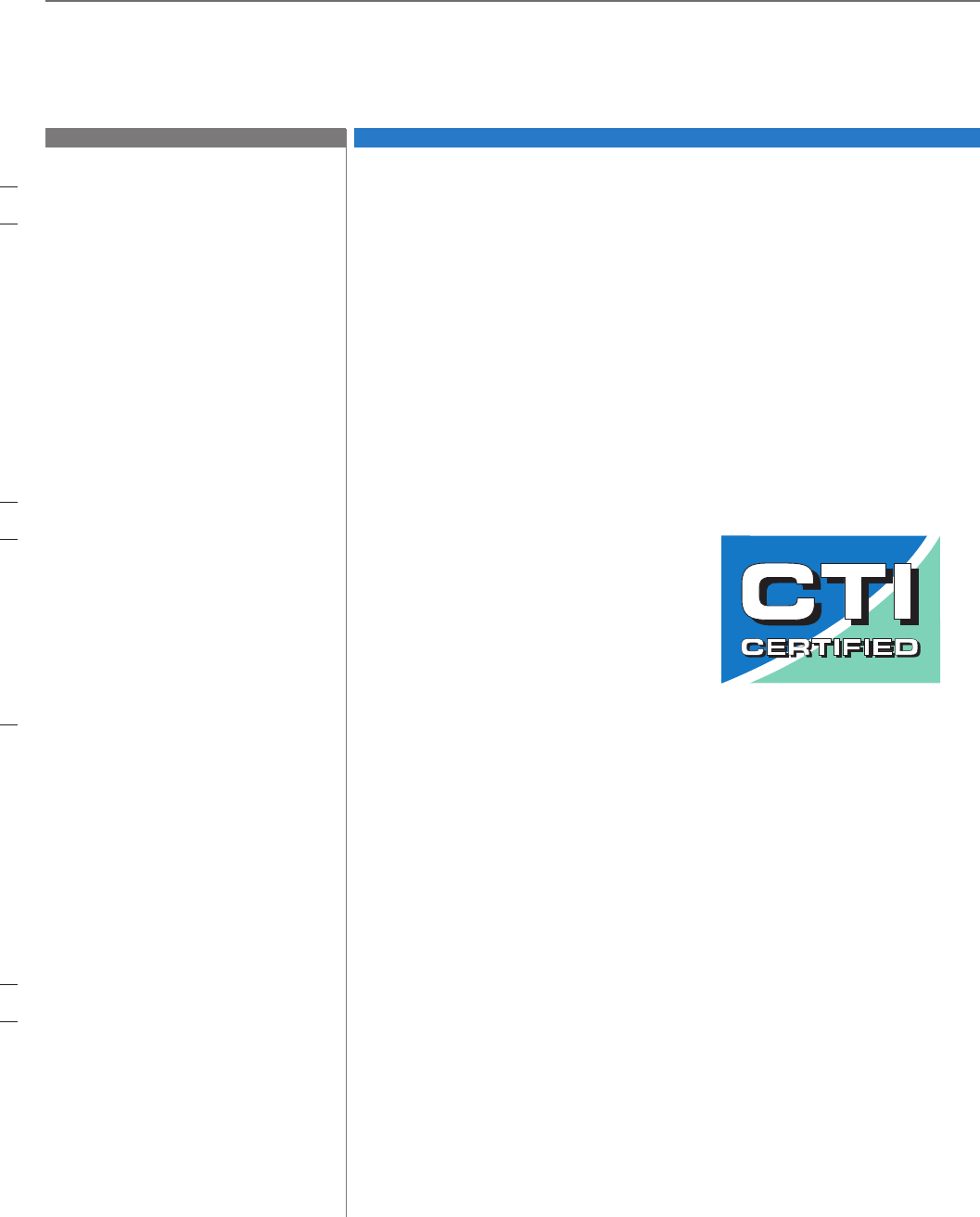
Specifications
Specification Value
Marley
/
MC Fluid Cooler
/
Specifications: Base
16
1.0 Base:
1.1 Furnish and install a forced-draft, coun-
terflow-type, factory assembled, film
fill, industrial duty, galvanized steel,
closed circuit fluid cooler. Unit shall
consistof_____cell(s),asshownon
plans. The limiting overall dimensions
of the fluid cooler shall be _____ wide,
_____ long, and _____ high. Total oper-
ating kW of all fans shall not exceed
_____ kW, consisting of_____ @ _____
kWmotor(s).Fluidcoolershallbesimi-
lar and equal in all respects to Marley
Model _____________________.
2.0 Thermal Performance:
2.1 Water as the heat transfer fluid.
The fluid cooler shall be capable of
cooling _____ m
3
/hrofwaterfrom
_____ °C to _____ °C at a design enter-
ing air wet-bulb temperature of _____
°C. Coil pressure drop shall not exceed
_____ kPa. The thermal performance
rating shall be Certified by the Cooling
Technology Institute.
2.1 Aqueous glycol solution as the heat
transfer fluid.
The fluid cooler shall be capable of
cooling _____ m
3
/hrofwaterfrom
_____ °C to _____ °C at a design enter-
ing air wet-bulb temperature of _____
°C. Coil pressure drop shall not exceed
_____ kPa. The thermal performance
rating shall be based on the Cooling
Technology Institute certified perfor-
mance rating adjusted for the thermal
properties of the aqueous glycol solu-
tion used.
3.0 Performance Warranty:
3.1 CTI Certification notwithstanding, the
fluid cooler manufacturer shall guaran-
tee that the fluid cooler supplied will
meet the specified performance condi-
tions when the fluid cooler is installed
according to plan. If, because of a
suspected thermal performance defi-
ciency, the owner chooses to conduct
an on-site thermal performance test
under the supervision of a qualified,
disinterested third party in accordance
with CTI or ASME standards during the
first year of operation; and if the fluid
cooler fails to perform within the limits
of test tolerance; then the fluid cooler
manufacturer will pay for the cost of
■ Your specification base establishes the type, configuration, base
material and physical limitations of the fluid cooler to be quoted.
During the planning and layout stages of your project, you will have
focused your attention on a fluid cooler selection that fits your space
allotment, and whose power usage is acceptable. Limitations on
physical size and total operating kW avoid the introduction of unfore-
seen operational and site-related influences. Specifying the number of
cells, and the maximum fan kW/cell will work to your advantage.
The benefit of a forced-draft counterflow fluid cooler is that they
are inherently easy to operate, access and maintain. Forced-draft
counterflow fluid coolers have all mechanical equipment located at a
low level for easy access, and the water distribution system is acces-
sible by simply removing the lightweight drift eliminator panels
■ CTI Certification means that the fluid cooler has been tested under
operating conditions and found to perform as rated by the manufac-
turer under those circumstances. It
assures the buyer that the fluid cooler
is not intentionally or inadvertently
undersized by the manufacturer.
■ However, CTI certification alone is not sufficient to assure you that the
fluid cooler will perform satisfactorily in your situation. Certification
is established under relatively controlled conditions, and fluid coolers
seldom operate under such ideal circumstances. They are affected by
nearby structures, machinery, enclosures, effluent from other sources,
etc. Responsible and knowledgeable bidders will take such site-spe-
cific effects into consideration in selecting the fluid cooler—but the
specifier must insist by the written specification that the designer/
manufacturer guarantee this “real world” performance. Any reluc-
tance on the part of the bidder should cause you some concern.


















